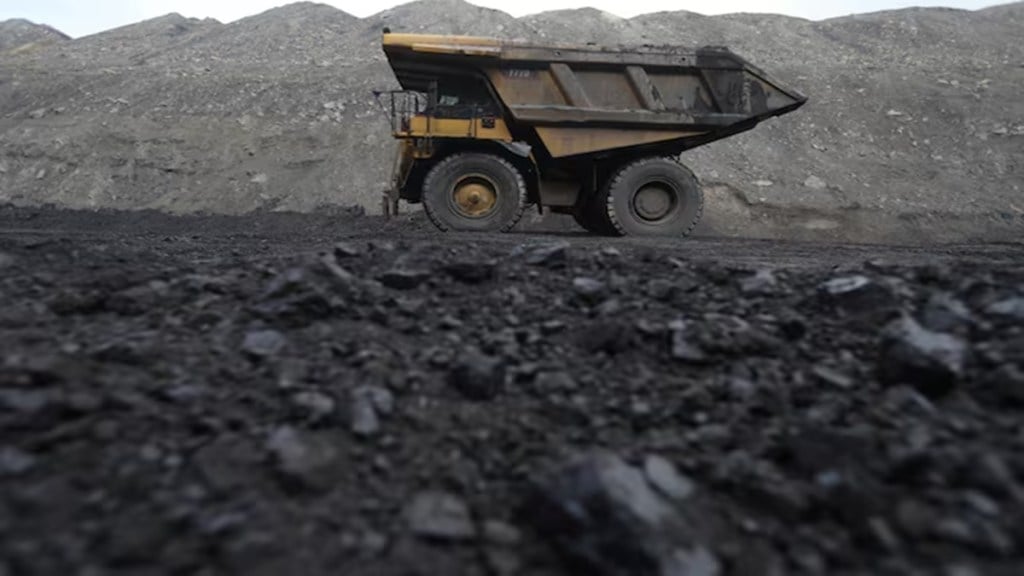The government has taken a fresh set of measures to ease the supply of coal to thermal power plants, as part of its efforts to avert a looming electricity supply deficit amid rapidly rising demand in the current and the coming summer seasons.
The Union Cabinet on Wednesday approved grant of fresh coal linkages to the country’s central and state thermal power units, as well as the independent power producers (IPPs), to help them meet short- and long term fuel requirements.
As per the revised SHAKTI (Scheme for Harnessing and Allocating Koyala Transparently in India) policy, coal allocation to the power sector will be eased under two windows – linkage to central gencos/states at notified price (Window – I); and to all gencos at a premium above notified price (Window II).
Under the first window, the existing mechanism for grant of coal linkage to central-sector thermal power units including joint ventures (JVs) & their subsidiaries will continue.
Additionally, coal linkages will be earmarked to states and to an agency authorized by a group of states as per existing mechanism, on the recommendation of the Union ministry of power.
The Central Electricity Authority has projected peak power demand to rise to 277 giga watts (GW) in the 2025-26, up 27 GW from the previous year. By 2029-30, the peak demand is seen to surge to 334 GW.
In 2024-25 the country has added 33 GW of additional power generation capacity, taking installed capacity to 475 GW.
“Coal linkage earmarked to states may be utilised by states in its own genco, Independent Power Producers (IPPs) to be identified through Tariff Based Competitive Bidding (TBCB) or existing IPPs having Power Purchase Agreement (PPA) under Section 62 of the Electricity Act, 2003 for setting up of a new expansion unit having PPA under Section 62,” the government said.
Under Window II, any domestic coal-based power producer having PPA or untied and also imported coal-based power plants (if they so require) can secure coal on auction basis for a period up to 12 months or for the period of more than 12 months up to 25 years by paying premium above the notified price. This will provide power plants the flexibility to sell the electricity as per their choice while encouraging IPPs to plan new thermal capacities.
Imported coal based (ICB) plants can also secure domestic coal under Window-II, subject to the technical constraints of ICB plants, thereby reducing their import coal dependency.
The benefits accrued, on account of import coal substitution, would be determined by Appropriate Regulatory Commission and passed on to the electricity consumers/beneficiaries, as per the government.
“Directions would be issued to Coal India Limited (CIL) and Singareni Collieries Company Limited (SCCL) for implementation of the decisions,” the government said. The move is also aimed at promoting setting up of greenfield thermal power projects primarily at pithead sites i.e. nearer to the coal source while also supporting brownfield expansion.
The latest move comes on top of a contingency plan has been put in place to boost power supplies, which includes ensuring adequate coal availability at thermal stations, and another 30 giga watt (GW) of coal-based generation units to be added to 50 GW under-construction capacities, a policy push being given to renewable energy (RE) storage with viability gap funding.
The government noted that with an aim to reduce the ‘landed cost’ of coal at thermal power plant end, coal source rationalization will be done. This will not only ease up railway infrastructure but would also ultimately result in reduced tariff for electricity consumers, it added.
Upon expiry of coal linkages secured under old policies, power producers may apply under the present proposed revised policy, as applicable, to secure fresh linkages.
The revised policy would not involve any additional cost to the coal companies.
There was a shift of the coal allocation mechanism from a nomination-based regime to allocation of coal linkages through an auction or tariff-based bidding with the introduction of SHAKTI Policy, 2017. Nomination based allocation continued only for the central or state sector power plants.
The policy was then amended in 2019 on the recommendations of the Group of Ministers and further amended later in 2023. The policy has various paras for allocation of a coal linkage to the various categories of power plants, subject to meeting the eligibility criteria.
With the introduction of revised SHAKTI Policy, eight paras of the policy have been mapped to only two Windows, in the spirit of ease of doing business, the government said.

